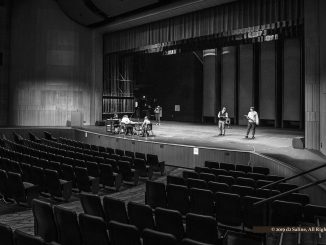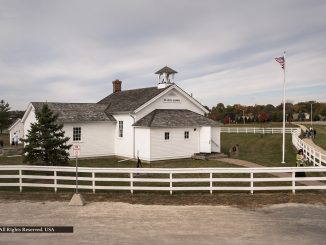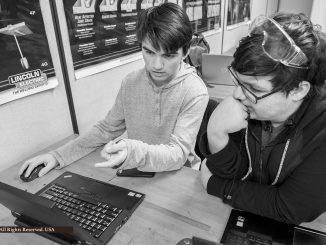
It was quite likely the Perry Mason television series that made first generations of parents “experts” on courtroom proceedings. Subsequent casts would have casual observers believe that The People’s Court reflects current reality. [1-3]
Long before that — and more important in terms of accuracy — this was part of a robust civics curriculum in public schools. In fact, the National Education Association (NEA) has described it as a fundamental charge of this institution. [4,5]
One of the primary reasons our nation’s founders envisioned a vast public education system was to prepare youth to be active participants in our system of self-government. The responsibilities of each citizen were assumed to go far beyond casting a vote; protecting the common good would require developing students’ critical thinking and debate skills, along with strong civic virtues.
Blind devotion to the state or its leaders would never be enough. Rather, being American was something to be learned and carried out.
As a practical matter, how is this made manifest?
In the the instance of what goes on in that place that may no more than simply resemble the stage upon which the Perry Mason dramas played out, Saline Middle School history teacher Kurt Roy-Borland took initiative in developing experiences with an eye toward bringing accuracy and environment more into alignment.
As part of a Criminal Justice Unit, he would put students into the mock roles of judge, jury members, prosecuting and defense attorneys, bailiff, witnesses, defendant, and other roles necessary to conduct a mock trial that he’d scripted to facilitate immersive learning. They’d dress the parts, too. And they’d conduct themselves in a municipal building heretofore a mystery in function and process to most of them: District Court 14A-4. [6,7]
Heady stuff. Ambitious, too.
It was also something that would require buy-in from school administration and The Honorable J Cedric Simpson, the judge who presides over Michigan 14A-4 District Court. In collaboration with three other teachers, some 450 eighth-grade students would be in the courtroom four times. Logistically, that involved fourteen orientation tours, another fourteen times observing actual dockets precided over by Judge Simpson, and twenty-eight mock trial periods. [8,9]
In addition, there student efforts are instructed by a 28-page guide that lists chargest, witnesses, evidence, and stipulations. The crime: Criminal Vandalism in the First Degree. Here are the facts of that case.
Saline Middle School is not unlike any other middle school in the country. The school very recently added new science laboratories to its physical plant. These new labs were fully stocked with brand-new computers, new lab benches, and fully supplied chemical cabinets.
At approximately 12:30 A.M. on November 21st, the new chemistry lab on the first floor of the building was broken into. One of the large windows was broken, and various pieces of laboratory glassware were shattered. All of the computers in the room were also destroyed. In addition to this, the chemical cabinet was broken into and several highly corrosive chemicals were removed. These chemicals were then spread throughout the room, destroying the walls, floor, and lab benches in the room. Additionally, the chemical made its way into the foundation of the school, necessitating massive repairs to the structure.
Neighbors heard the commotion and phoned the police. Upon arrival, officers discovered no persons on the premises but detected the odor of chemicals. HAZMAT teams were called in order to decontaminate the site. Upon investigation after decontamination, police discovered a baseball bat lying outside of the broken window along with a ripped piece of flannel clothing on one of the broken panes of window.
As a result of this act of vandalism, the school was forced to rent portable classrooms along with a special portable chemistry laboratory. The town also had to replace large portions of the school’s foundation. As a result of this aspect of the vandalism, classes were not held for one week due to the precarious state of the school’s foundation.
On November 28, the first day of classes after the vandalism, the principal of Saline Middle School, Principal Lee Meng, began interviewing students who had class in the chemistry lab. In addition, the city of Saline, where Saline Middle School is located, offered a $10,000 reward to anyone offering any information leading to the arrest and
conviction of the vandal or vandals.On November 28, Taylor Conroy, a student, went to see Meng. After a thirty-five minute closed-door meeting, the police were called, and Sydney Briggs, also a student, was arrested for vandalizing the chemistry laboratory.
With that, an agreement was reached a dozen years ago now to put Saline Middle School students into this courtroom for an object civics lesson that none was likely ever to forget. The latest groups stepped into the fray this past January 9 and deeply embroiled in their own adversarial constructs en route to verdicts.
Saline Journal has been with them for this trimester as well. In the coming weeks, we’ll expand on their stories of both process and outcome (while making every possible effort to inviting thoughts of Doug Llewelyn). [10]
References
- “Perry Mason” IMDb.
- “Full Episodes: The Case Of the Restless Redhead” (September 21, 1957) CBS.
- “The People’s Court” (1981-1993) IMDb.
- NEA: National Education Association (home page).
- “Forgotten Purpose: Civics Education in Public Schools” Amanda Litvinov (March 16, 2017) NEA Today.
- “Across From Middle School, Next To Global Manufacturing, A Block From Bowling Alley: District Court 14A-4 Is In Saline” Dell Deaton (September 17, 2018) Saline Journal.
- “14A District Court” Washtenaw County Michigan.
- Saline Area Schools (home page).
- “J Cedric Simpson” Washtenaw County Michigan.
- “Doug Llewelyn” IMDb.



